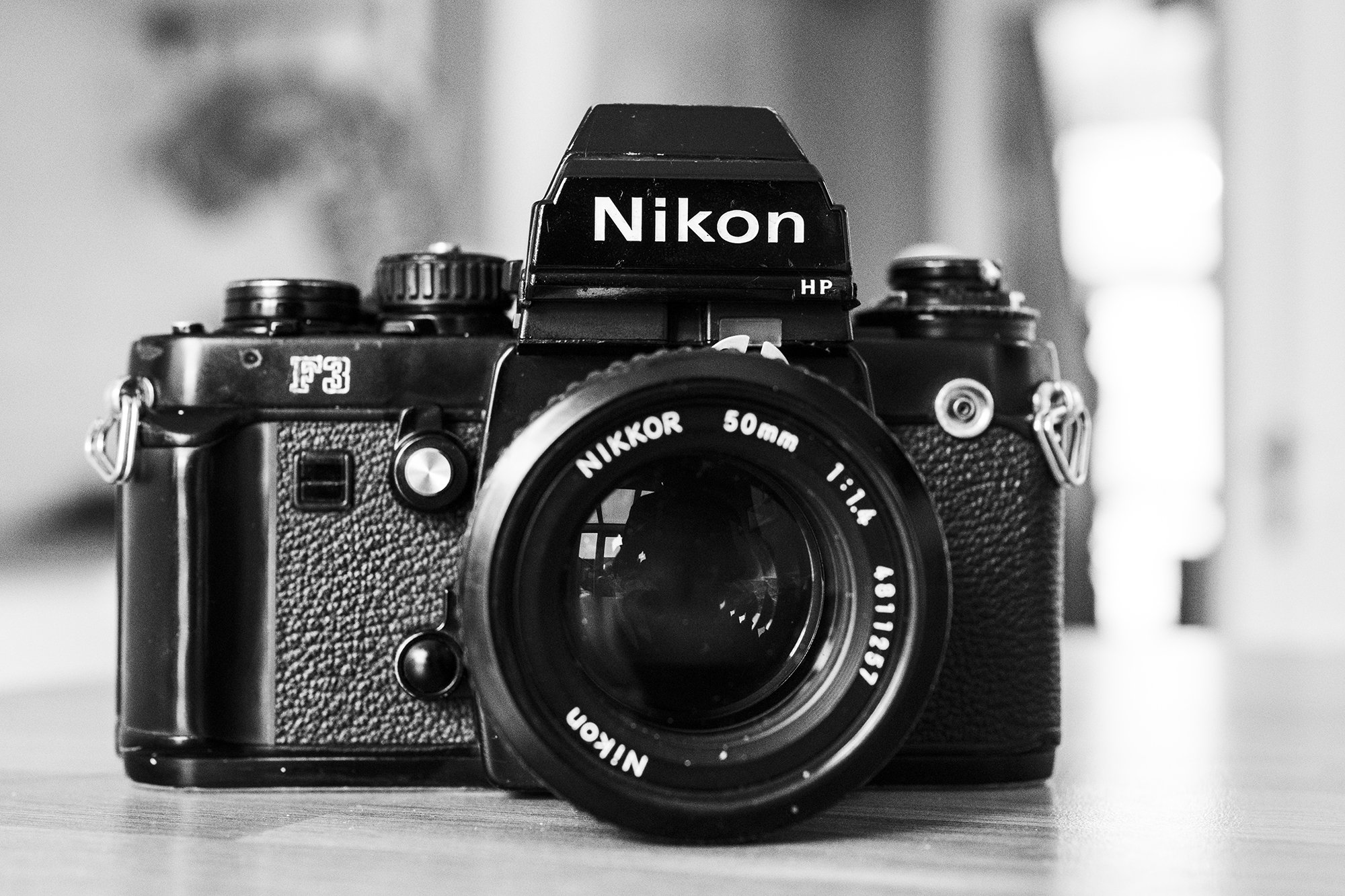My latest film camera: the Nikon F3
The latest addition to my stable is this thoroughbred beauty, the Nikon F3. Whilst I’ve shot with the Nikon F, the F2, F2S, F2AS and the F4, this model seems to have passed me by.
The F3 entered production in 1980 and was the first Nikon SLR to have an electronic shutter; should the battery die, although this initially concerned my a little, there’s an emergency mechanical shutter which I think fires at 1/60th.
In keeping with previous models it has an interchangeable viewfinder (mine is the big and bright HP version) and is built like a tank. I’m a big fan of shooting in aperture priority automatic for street photography and I’m really pleased that the F3 has an ‘A’ mode on the shutter speed dial and, of course, the much-used exposure compensation dial on the left side of the top plate.
I’ve got the old 50mm f/1.4 (what else?) on the front, which is a lens I’ve always loved. I usually shoot 35mm for street photography but this lens has such a lovely feel and a great look right across the aperture range (especially wide open for portraits), I really couldn’t use anything else.
I’ve got a roll of Tri-X inside and I’m chomping at the bit to get cracking doing some street photography in London this weekend. I’ll post some of the results on here in due course!
As photographic technology has become so sophisticated and capable, it seems counter-intuitive that so many of us are going back to analogue shooting (some would say ‘why use film to make a picture worse when digital will make it better?’); I disagree with this sentiment, by the way, and I feel that the ‘film look’ takes us to a place that digital can’t even get close to. There’s so much more to say about this but I’ll save it for a future article.
On most of my street photography workshops there’s now at least one film shooter and I’m always impressed with their commitment to the craft. Who would have thought, 10 years ago, that shooting street photography on film would have become so popular again?




